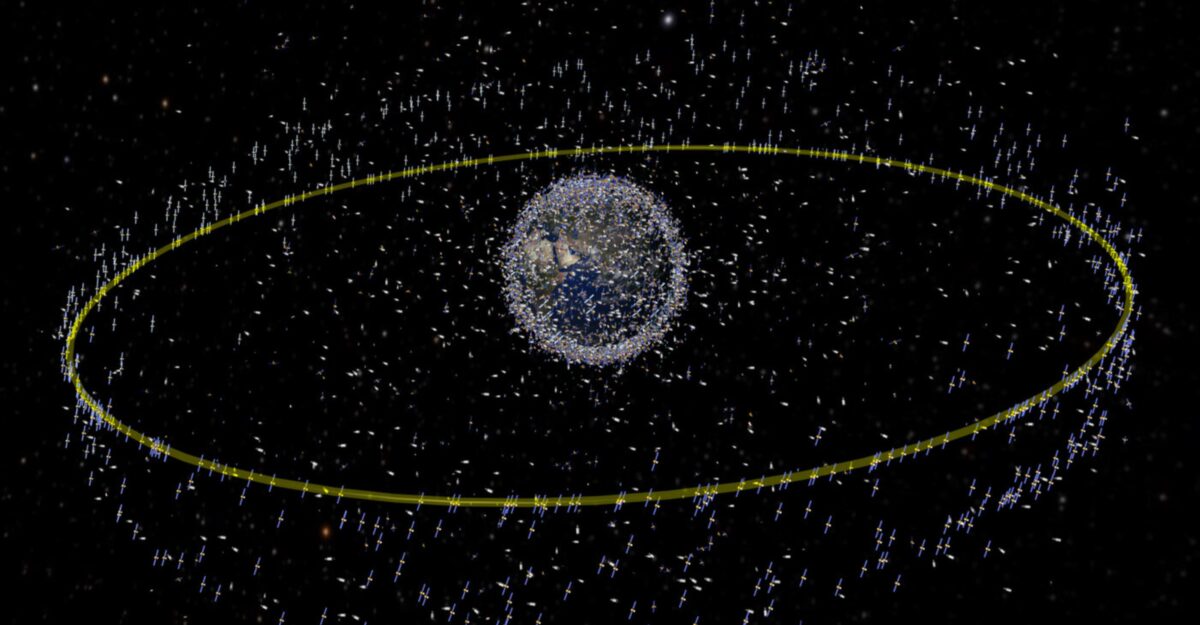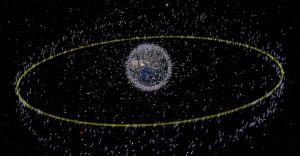What is SDA and Why is it Critical to the UK Space Industry?
9th Jan 2024
A growing space industry brings with it the demands for more advanced monitoring, and an understanding of what is going on in the vicinity. While we may look out at “the great beyond” and think of it as sparsely-populated, much of what is happening above the clouds can impact life here on earth. What’s more, there are around 10,000 satellites already orbiting, or lost in space, which means that it is more important than ever to be able to track and understand movements. People have even started using the term “congestion” to describe the cloud of satellites in orbit. The name for this monitoring and understanding is Space Domain Awareness, or SDA.
Space Domain Awareness is fast becoming one of the most crucial tools that allows us to understand the movements of space debris, satellites, and other bodies.
The inability to track satellites, debris, and other space events can potentially threaten launches, satellite operations, and even spaceflight, and as we enter a new age of private space companies and regular launches, it is crucial that there are methods to track potential hazards.
Famously, in 2007, China fired an SC-19 ASAT missile at its own weather satellite Fengyun-1C, and the Space Surveillance Network detected that there were around 15,000 pieces of debris that stemmed from the event, as well as hundreds of thousands of debris particles that could not easily be tracked. This alone underlines the importance of gaining knowledge regarding satellites.
Studies estimate that there could be somewhere between 30,000 and 50,000 tracked items in orbit. These can move at orbital velocities exceeding thousands of miles per hour and therefore provide a threat to unmanned craft, as well as a potential risk to life on any manned craft. Items may also end up trapped in the Earth’s atmosphere and ionosphere. Around 1,000 are operational satellites, but besides this, there is a whole lot of waste, or “Space Junk” to contend with.
Particles within the atmosphere also have the capacity to interfere with equipment and electromagnetic signals, impacting positioning and navigation systems so much of modern life relies upon. The debris is already significant, but it is only going to become more extreme as time goes on.
Defining SDA: Different Aspects of Space Domain Awareness
There’s no single definition of SDA. People have a pretty clear idea of what the term means, but there are many different aspects that can fall within this field of space exploration.
SDA generally encompasses capabilities of a space agency or company in the following areasL
- SST – Space Surveillance and Tracking. This is the act of detecting objects within space, and predicting and modelling their orbits to potentially establish whether they are threats, as well as keep a record of what debris or other space objects are doing.
- Fragmentation Analysis. This is the act of tracking new debris which could come from an explosion, for instance, when a rocket body collides with something or doesn’t make its destination. New debris can be hard to track but it is crucial that risks are assessed where possible.
- Conjunction Analysis: Finding the probability that objects will collide within space and taking action to try and prevent this. The “PoC” calculation can provide a “Probability of Collision” figure between two objects, which is particularly useful when tracking debris.
- Re-entry Analysis. Working out the probable area of impact if space objects will re-enter the atmosphere, as well as the probability that items will actually re-enter the atmosphere at all.
- Space Intelligence. This relates to analysis, data, and the exploitation of data to try to understand both capabilities and intentions. For instance, whether an unrecognised satellite has hostile intentions.
- Space Weather. Both solar weather and space weather are important for understanding the context of what weather could impact current satellites.
As the private space sector grows in conjunction with numerous private partners, the opportunity for companies to work with agencies and provide services in the field of Space Domain Awareness is likely to be crucial to allow the industry to grow at speed. Already, we are seeing numerous contracts handed out to SDA companies in the UK and beyond.
The UK’s Approach to Space Domain Awareness
Back in 2022, The commander of U.S. Space Command, General James Dickinson, called space domain awareness “No. 1 need” of the command.
“We need to enhance our understanding of the congested and complex space operational environment, to include what is occurring and when, and the intent behind those engaged in such actions.”
The UK has a similar outlook. As well as publishing studies on Cross Government Space Domain Awareness (SDA), the UK Space Agency has already begun the process of handing contracts to partners.
London-based Spaceflux have been recruited and handed a contract to provide tracking data about satellites in geostationary orbit (GEO) as well as creating a ground-based SDA sensor, which will be based in Cyprus. Spaceflux already has a network of sensors with 10 unique locations across 5 continents.
UKSA’s Dr Paul Bate explained the thinking behind: “As our reliance on satellites for everyday activity grows and the UK becomes a hub of small satellite design, manufacturing, and launch, we are at the forefront of ensuring a safe and secure space environment.
“But with more than 8,000 operational satellites and more than 30,000 pieces of trackable debris, the ability to operate safely in space is growing increasingly challenging. Operating a sensor in Cyprus enhances our vital national capability to track objects in space to help avoid collisions and protect the satellites we depend on.”
The project is referred to as Project Nyx Alpha, and data from Spaceflux will help the UK to monitor satellites as well as protect space assets from hostile actions and collisions.
As well as awarding contracts to other companies, the UK Space Command and UKSA are launching the National Space Operations Centre (NSPOC) next year in order to support Defence Space Strategy.
The UK’s Space Domain Awareness Report also outlines the crucial aspect of collaboration and working with other agencies, something that the NSPOC will seek to do:
“The Space domain has become increasingly congested and complex requiring cross-government agencies to utilise space surveillance and tracking techniques in order to detect, track and identify objects in or entering the space domain. SDA is defined in Joint Doctrine Publication 0-40 1 as ‘the provision of security-focused, decision-quality information that can be used to successfully mitigate adversary space effects while supporting the integration of allied space effects into multi-domain operations”
“The intent is to combine individual sensors through a system of systems approach to draw data from a variety of capabilities and fuse it with operational and intelligence sources to underpin the analysis of activities in space and provide true domain awareness. Encompassing space, ground and link segments, SDA is complex and rapidly evolving, however, the endeavour is inherently dual use with the same sensor data potentially being suitable for a multitude of functions.”
What is the Difference Between Space Domain Awareness and Space Situational Awareness (SSA)?
Space Situational Awareness is more about understanding the activity surrounding a specific activity or task. It is a way to understand the wider-context around space activities such as launches, aiding with decision-making.
Situational Awareness is more tightly linked to specific decisions on a specific timeline and within the realms of one specific project such as a space launch. Space Domain Awareness relates more to the overall picture of what is going on within space and the Earth’s orbit.
In Summary: No Growth Without Awareness?
Growth in the Space sector is predicated on some degree of safety, and the reliance modern life has on satellite technology is evident in day-to-day routines. This means thousands of operational satellites, thousand more pieces of debris and discarded technology, plus plans to launch many more satellites.
With small satellites such as Cubesats becoming mainstream, it is becoming more straightforward to deliver payloads into space, and space agencies are recognising that without adequate tracking and awareness, the risks of accidents continue to grow. Without a way to track these items within space, restrictions may even be required regarding what can be sent to space, which is why high-tech companies like Spaceflux are seeking to keep the UK’s space operations safe.






Thank you for your comment! It will be visible on the site after moderation.